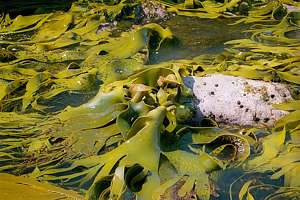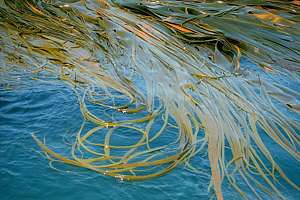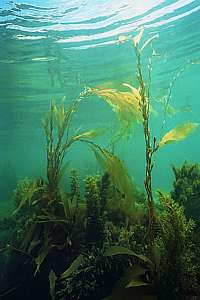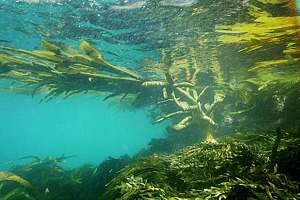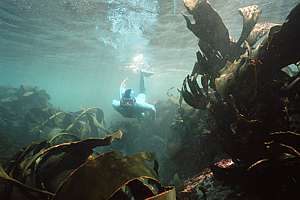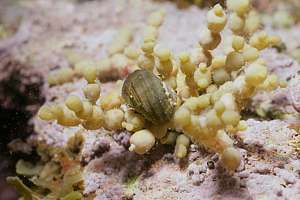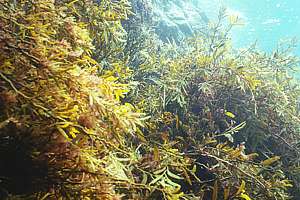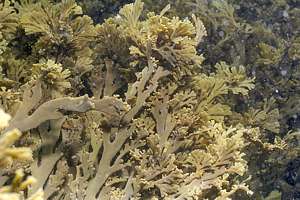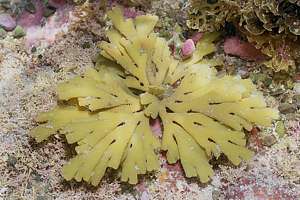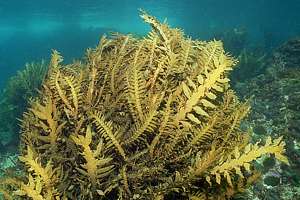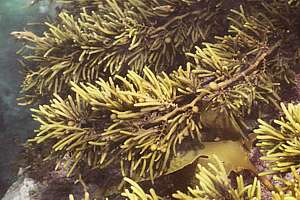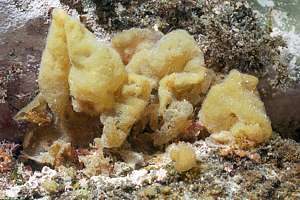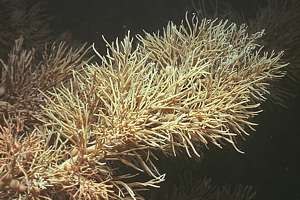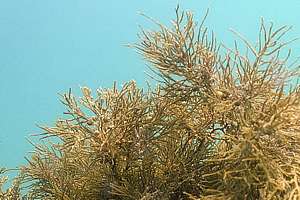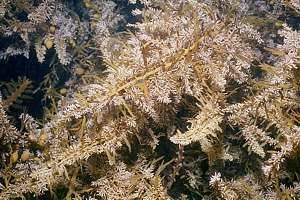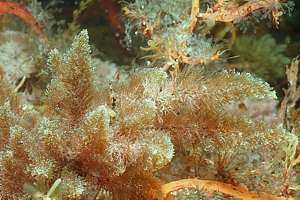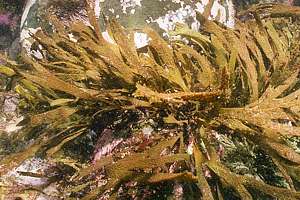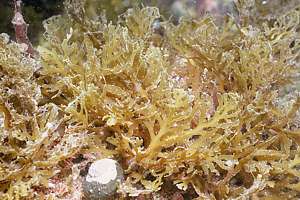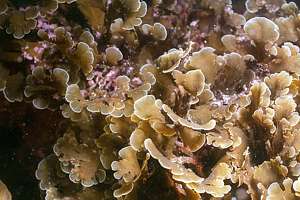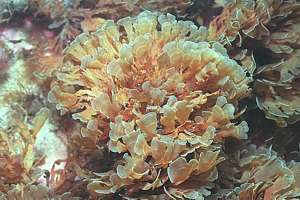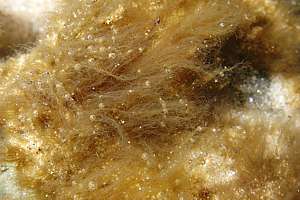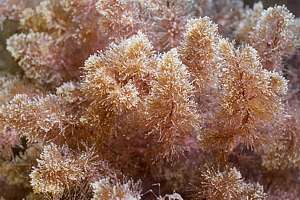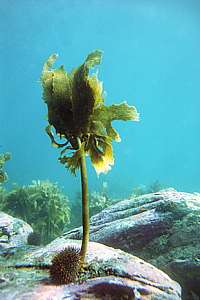 f006828: the stalked kelp (Ecklonia radiata) stands
erect by the stiffness of its stalk, rather than by float bladders. Its
large crown makes it susceptible to being pulled off the rocks by waves,
so it prefers the calm of the deep. Here a sea urchin is considering to
clear-fell it, as it is standing inside the urchin barren zone.
f006828: the stalked kelp (Ecklonia radiata) stands
erect by the stiffness of its stalk, rather than by float bladders. Its
large crown makes it susceptible to being pulled off the rocks by waves,
so it prefers the calm of the deep. Here a sea urchin is considering to
clear-fell it, as it is standing inside the urchin barren zone. |
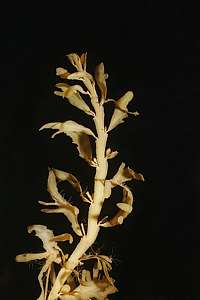 f048401: the flexible weed (Carpophyllum flexuosum)
has an almost straight flat stem and long leaves with a mid-rib and smooth
edges. It is not strong and prefers calm conditions. The flexible weed
is particularly successful inside harbours, as it is able to shed deposition
by sloughing it off.
f048401: the flexible weed (Carpophyllum flexuosum)
has an almost straight flat stem and long leaves with a mid-rib and smooth
edges. It is not strong and prefers calm conditions. The flexible weed
is particularly successful inside harbours, as it is able to shed deposition
by sloughing it off. |
 f048306: in sheltered conditions the flexible weed (Carpophyllum
flexuosum) can grow over 6 m tall, at times forming veritable forests,
but such forests can disappear overnight by a large storm.
f048306: in sheltered conditions the flexible weed (Carpophyllum
flexuosum) can grow over 6 m tall, at times forming veritable forests,
but such forests can disappear overnight by a large storm. |
